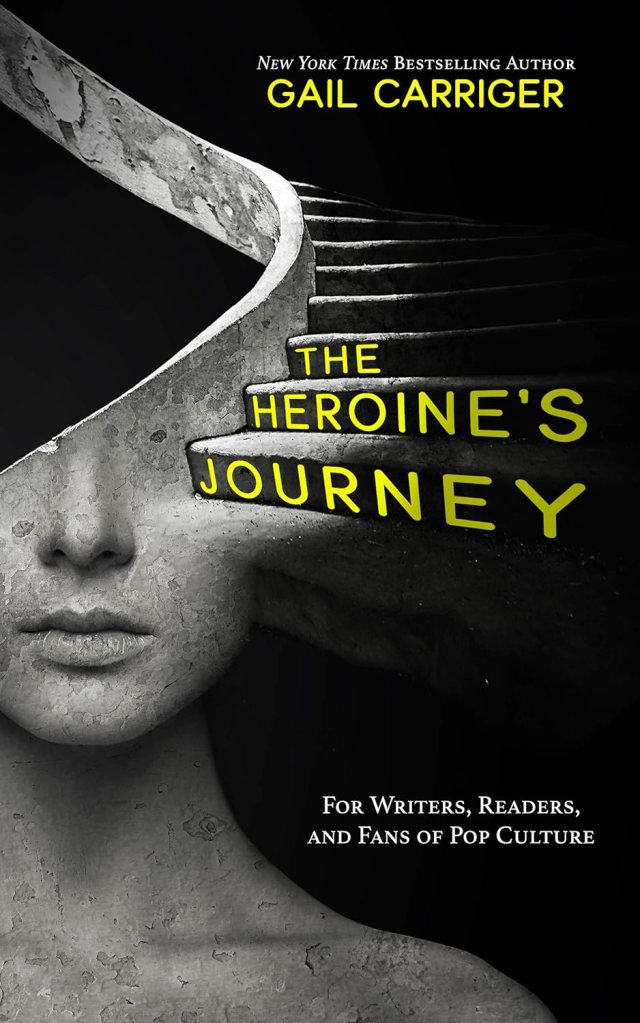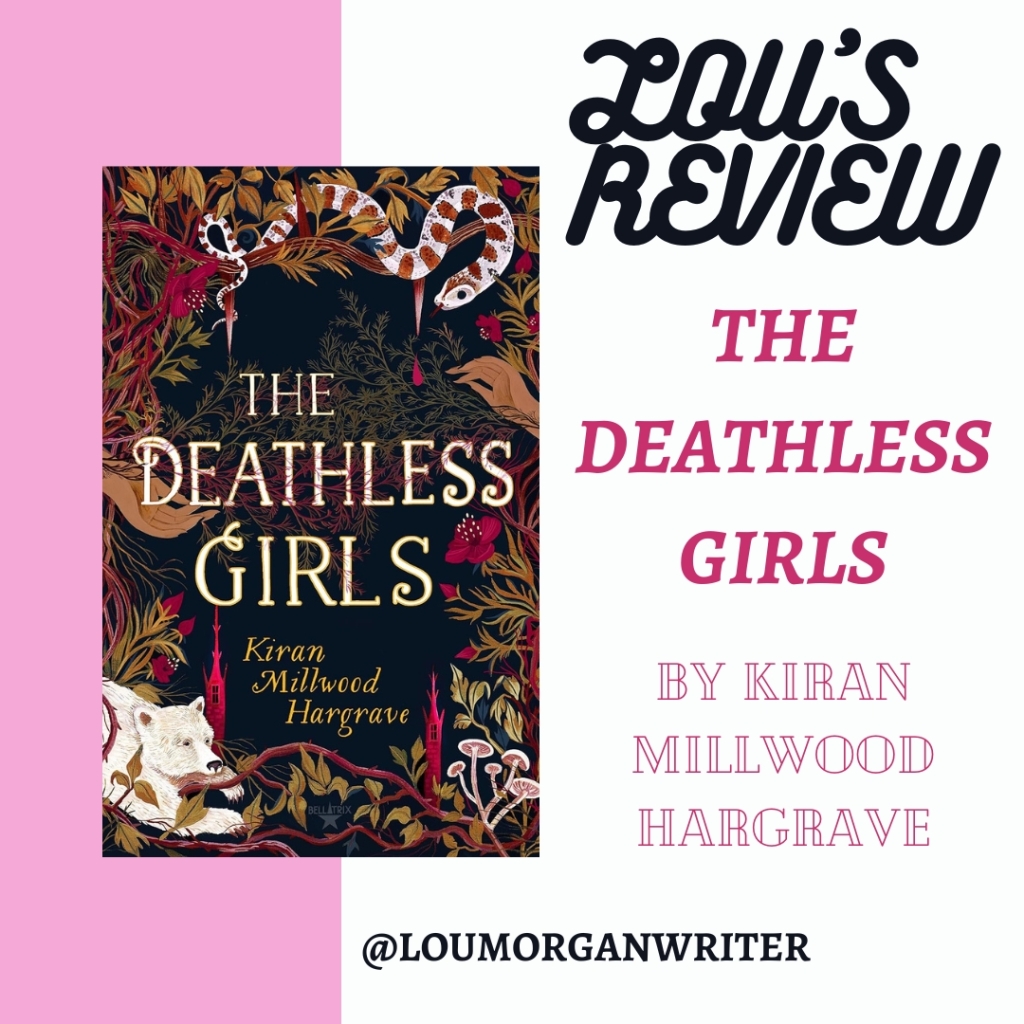The Deathless Girls is one of my all-time favourite sapphic YA novels. It reworks the legend of Dracula’s brides from the perspective not of the killer count, but a young Traveller woman who has suffered under his reign of cruelty – and that shift in framing allows for radical new possibilities in the lives of female characters previously defined by male fantasies, while leaning into all the classical elements that make vampire lore so thrilling. Kiran Millwood Hargrave has written another gorgeous novel with the power to both surprise and fully satisfy.
On their seventeenth birthday, Lillai and her twin Kisaiya expect to have their fates divined and take their places as women among their community. Constantly overshadowed by her bolder and more beautiful sister, Lil secretly dreams of being a singer – but when the camp is attacked and their people slaughtered, both girls are taken captive as Boyar Valcar’s slaves. But there’s more than one use for serving girls, and the rarity of twins leads to Lil and Kizzy working in the castle. And while it’s more comfortable than working the fields, there are more dangers, as Kizzy can’t help but draw the attention of powerful men.
For the first time, Lil’s path in life splits from her sister’s. And their differences grow more pronounced as Lil finds one steady source of joy within their prison: Mira, a serving girl with eyes the colour of smoke. Which means that Lil must choose between the safety of her newfound happiness, or risking it all by facing off against unspeakable horrors to be reunited with Kizzy.
The Deathless Girls is a gripping, fast-paced adventure written with the lyrical beauty I’ve come to associate with Millwood Hagrave’s writing. The first time I read this book, I raced through it, utterly desperate to find out what would happen next. And though Lil is frantic at the thought of being separated from her older sister, her other half, her growth arc when they’re apart is nothing short of remarkable. Without Kizzy’s fearlessness to fall back on, Lil has the space to develop a courage and independent streak of her own. She’s a brilliant, sympathetic character with all the best qualities one could hope for in a protagonist.

Also, I love that Millwood Hargrave leaned into the Heroine’s Journey, recognising community and collaboration as a strength. The togetherness she forms with other characters is crucial for Lil’s arc. In a Western, patriarchal society we’re taught to lionise the idea of one man who steps into heroism by going off alone, achieving his goal in solitude. But in recent years there’s been a trend of media pushing back against this archetype, e.g. Brooklyn 99’s Detective Jake Peralta learning that he’s far more effective working as part of a team than competing with his fellow cops. And there’s something deeply moving about Lil – an outsider on account of her dark skin, Traveller status, and sexuality – claim her power through allying with her lover, her family, her community.
Millwood Hargrave is an incredibly perceptive writer with a knack for exploring the theme of belonging in her stories. Lil and Kizzy being Travellers – often the largest and most visible ethnic minority group in the lands where Dracul reigned – adds a fascinating layer to the story. The Settled treat Travellers with contempt and suspicion; even when they’re all slaves together, the Settled characters find comfort in looking down on Travellers, which is far safer than raging against the wealthy overlords responsible for their suffering.
In a way it reminded me of right-wing fearmongering via endless stories about immigrants ‘coming for British jobs’, when in reality unchecked corporate greed and the rise of automation are the biggest strains on the job market. Though The Deathless Girls is set in a completely different place and time, it taps into fundamental truths about tribalism and the security people seek out in treating other human beings as somehow lesser. The layers of tension between characters is what makes this world so compelling, and utterly believable in spite of the fantasy elements.
Lil’s relationships with Kizzy and Mira – in particular the conflict between these two loves – is utterly gripping. Kizzy’s resistance to Mira goes beyond the natural wariness Travellers hold towards the Settled. She’s dismissive of Mira in a way that speaks of underlying fear, because this is the most significant relationship in Lil’s life outside their twin bond. Kizzy perceives Mira as a threat on some level, in part because sexuality is the biggest difference between sisters who have always taken pride and comfort in their similarities.
Reading this story, I couldn’t help but wonder if Kizzy would have responded more positively towards her sister having a male partner. After all, though it’s Kizzy’s own male love interest who creates the biggest barriers between sisters, she never fully identifies him as the problem. Whereas Mira risks her life to help Lil reunite with Kizzy, and even then the elder twin can’t warm towards her.
I was fully invested in both of Lil’s central relationships, even as they pulled her in different directions. Kizzy’s bravery in the face of violence and oppression make her a compelling character, even if there are low-key lesbophobic vibes. And Mira is the worthiest of love interests: loyal, deeply principled, and willing to go to any lengths for the people in her heart.
Though Dracul has reigned over the popular imagination since Bram Stoker’s classic first went to print, The Deathless Girls unapologetically centres female characters and the relationships between them. For all the Voivode casts a long shadow over the story, these women find light and meaning in each other. And that is the power of a retelling – giving voice, agency, and significance to female characters who were previously defined in relation to men.
